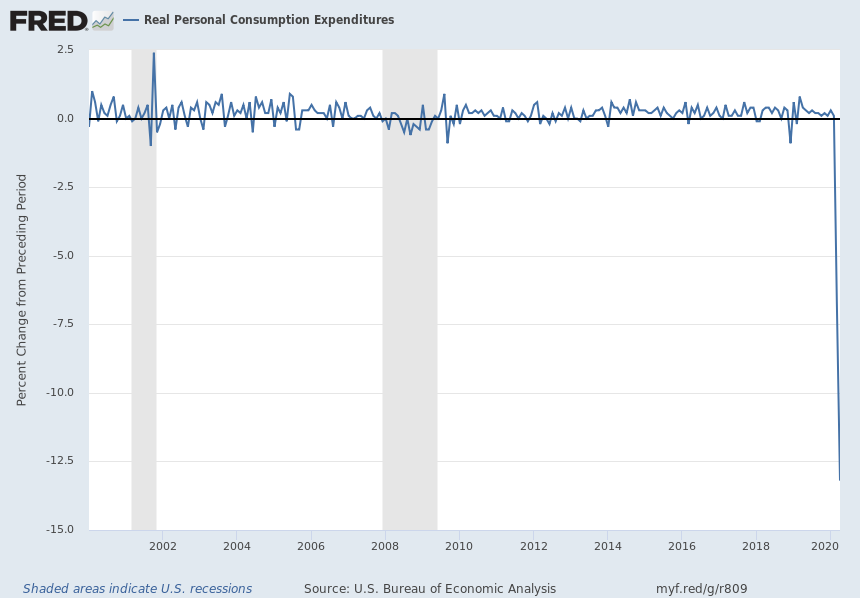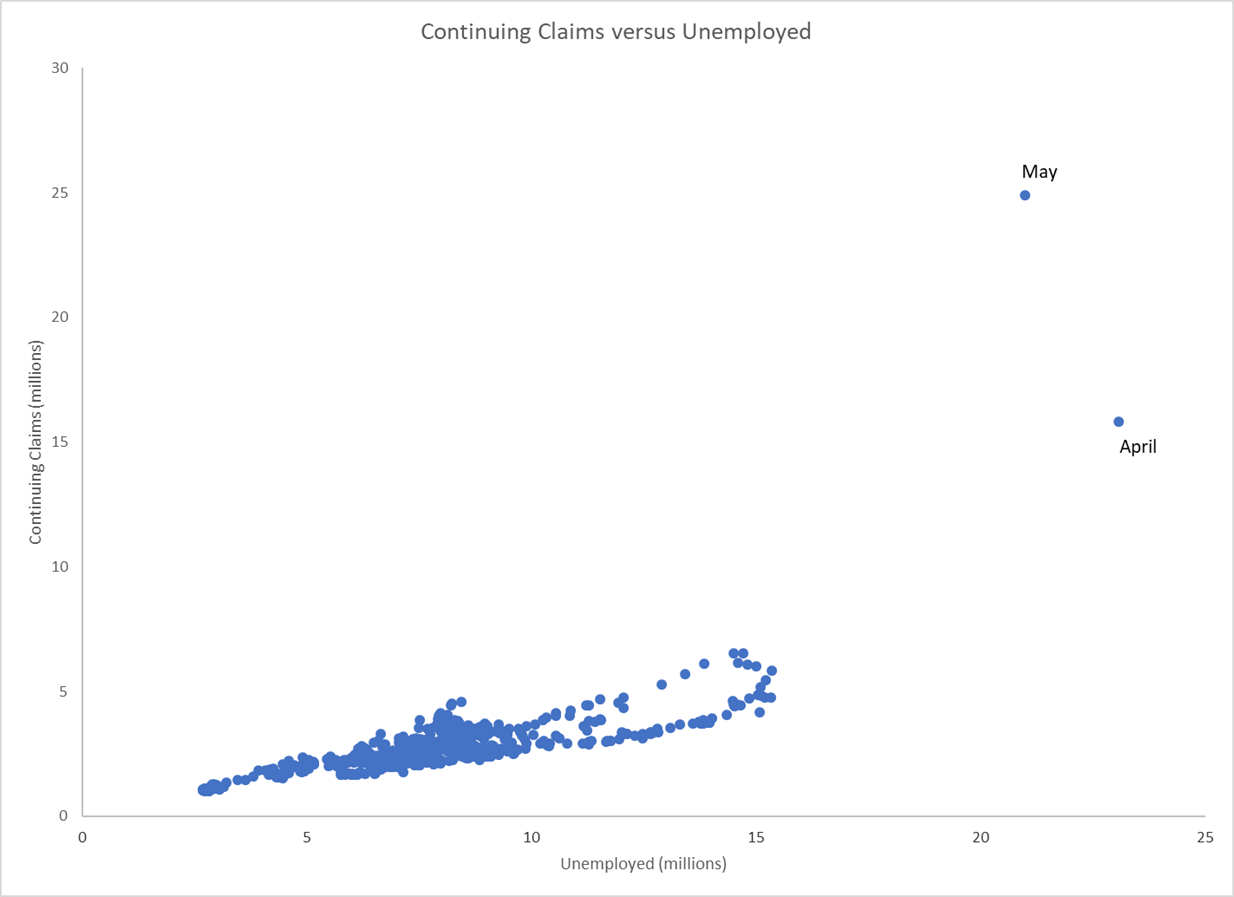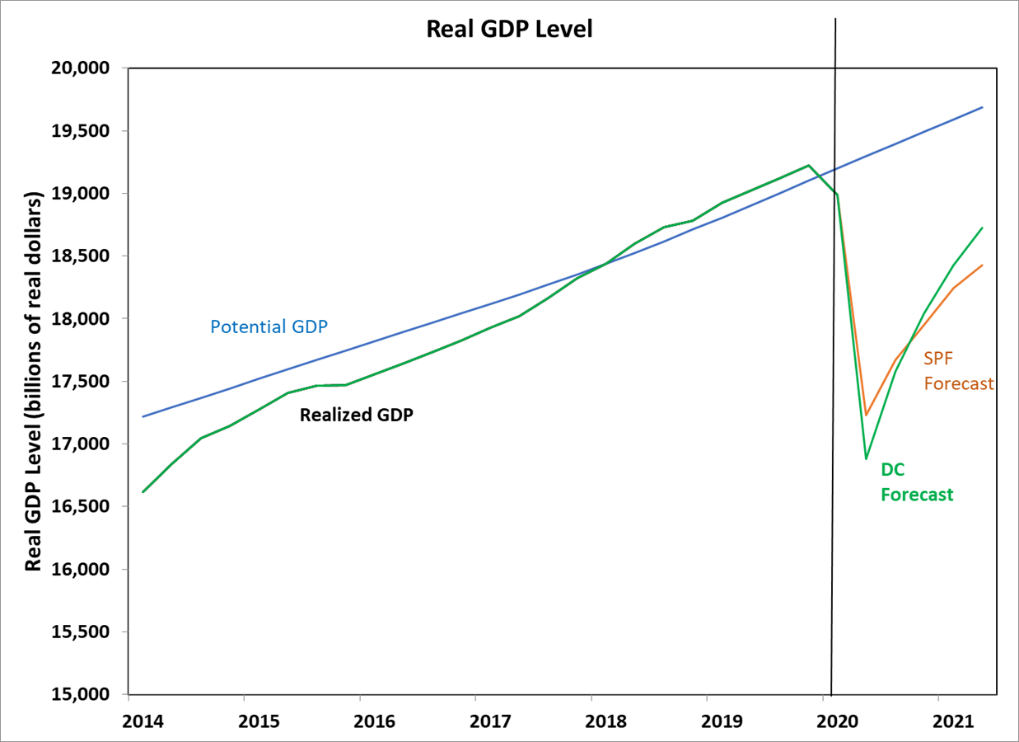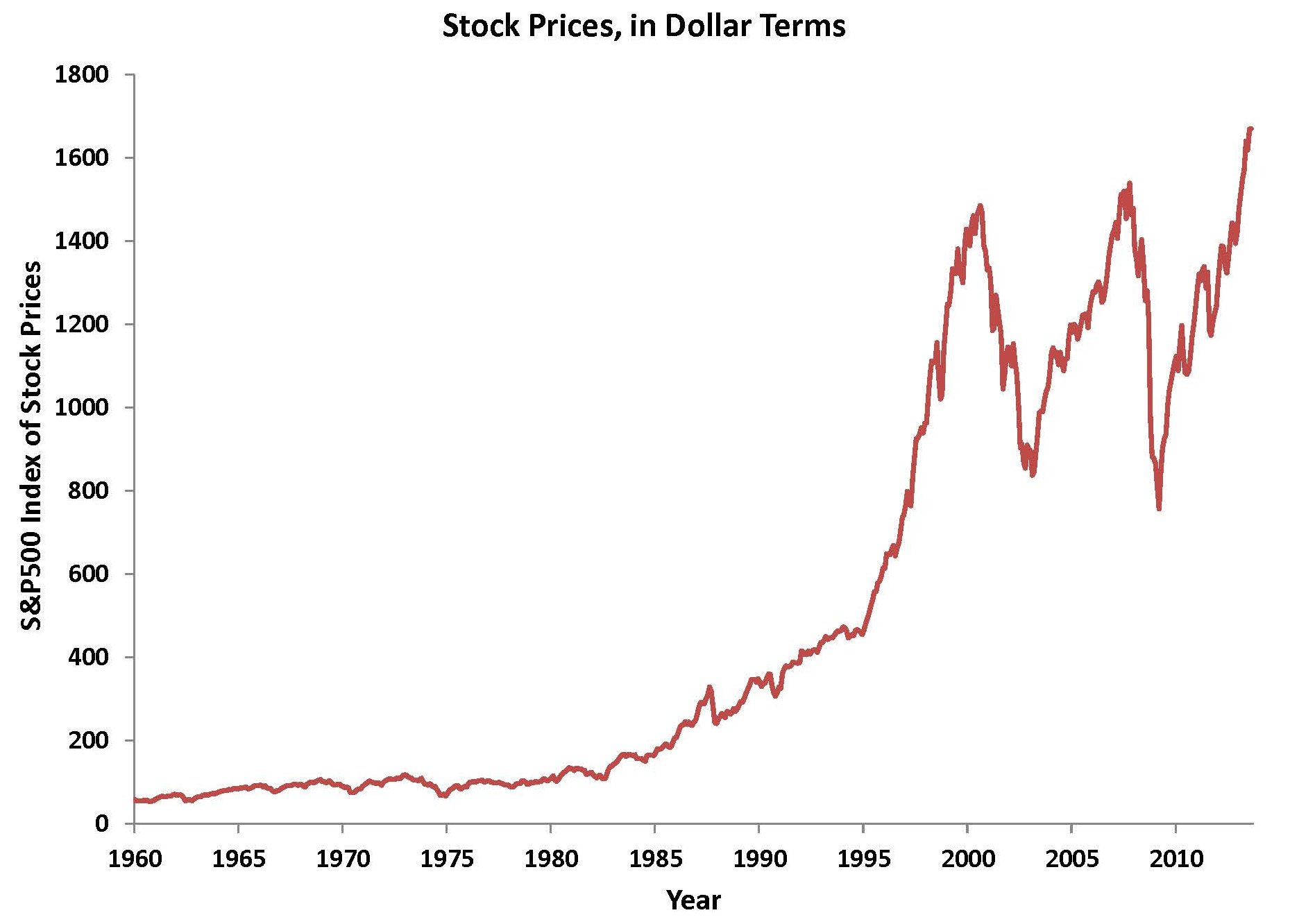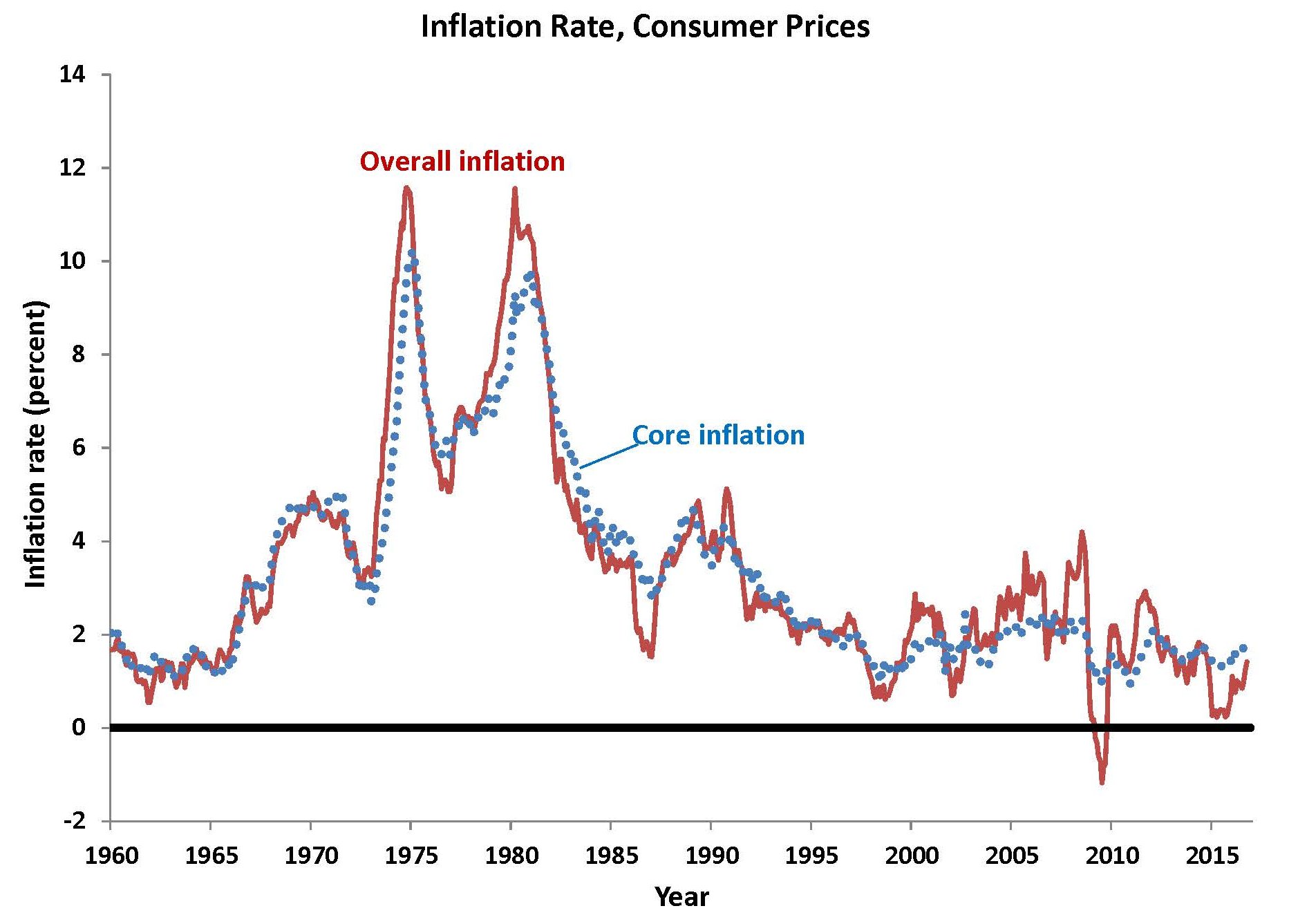How bad is inflation?
Over the last 12 months (January to January), the overall inflation rate (measured using the Consumer Price Index, CPI) was 7.5%. The last time inflation was this high was in 1982, some 40 years ago. Part of the reason for the high rate of inflation is high energy prices. For that reason, and because food prices often cause a temporary spike in inflation, macroeconomists commonly remove food and energy prices from the overall measure to look at a measure of “core” inflation. The graph here shows both overall and core inflation using the CPI. Core inflation was up 6.0% over the past year. Both measures are much higher than they have been at any time in the preceding 20 years, with the previous peaks since 2000 at 5.5% for the overall inflation rate and 2.8% for the core inflation rate.

One important issue in measuring inflation is that the construction of the CPI leads to an upward bias in the inflation rate. The CPI measures the prices of a fixed basket of goods but we know that when prices of some goods go up, people substitute some cheaper goods. The best measure that allows for this substitution effect is through a slightly different measure of prices, known as the personal consumption expenditures price index (PCEPI). Based on a significant amount of research, many macroeconomists believe that the PCEPI is a more accurate measure than the CPI.
Even the PCEPI shows a large increase in inflation in 2021, as the following figure shows. Over the past 12 months to December 2021, the overall PCEPI inflation rate is 5.8% and the core rate is 4.9%. Both are higher than in all the years from 2000 to 2020, which maxed out at 4.1% overall and 2.7% for the core inflation rate.

Who is responsible?
Responsibility for the high inflation rate rests with the Federal Reserve. Yes, there have been other factors that caused inflation to rise. Energy prices are much higher, but that doesn’t explain the rise in the core inflation rate. Supply shortages caused by the pandemic have certainly made inflation worse. Because workers were unable to produce enough of certain types of goods in the pandemic, numerous shortages of goods occurred. Shortages of semiconductors led to shortages of final goods, such as automobiles. And when shortages of goods occur but people have a lot of money to spend, the result is that prices rise as people bid for the scarce goods.
Another factor causing inflation is fiscal policy that was geared towards mitigating the impact of the pandemic. In 2020 and 2021, not knowing how damaging the pandemic would be to the economy, the federal government provided income support to many people and business firms around the country, as well as enhancing unemployment insurance. The result was that some people ended up having much higher incomes than before the pandemic, and fewer opportunities to spend their funds. As the impact of the pandemic lessened over time, those people spent more on goods and purchasing financial assets, causing prices to rise across the board. Not only did inflation rise, but the income support provided by the government led to a huge increase in government deficits and the highest level of federal debt to GDP in history since World War II.
Although supply constraints, energy prices, and government policy contributed to inflation, the primary responsibility for inflation lies with the Federal Reserve. The Fed made several key errors over the past two years. First, the Fed treated the pandemic in the same way it did the financial crisis that started in 2008, even though the pandemic had much milder long-term impacts on the economy. The Fed cut interest rates to near zero and did more quantitative easing and other lending than it did in the financial crisis. However, financial markets recovered quickly after the pandemic began, yet the Fed kept pouring money into the economy. Second, the Fed decided to renege on its inflation target of 2%, stating in August 2020 that “following periods when inflation has been running persistently below 2 percent, appropriate monetary policy will likely aim to achieve inflation moderately above 2 percent for some time.” But financial markets care about the future, not the past, so the statement was risky in that it could lead to a change in people’s expectations of inflation. Third, the Fed ignored inflation signals, and continued to insist that it would keep using expansionary monetary policy “until labor market conditions have reached levels consistent with the Committee’s assessments of maximum employment” (July 2021); but inflation was already above 4% and the Fed did nothing.
What is worse than the rise of inflation is the nonchalance that is exhibited by Fed Chair Jay Powell and other policymakers. Powell may go down in history as the worst Fed chair since Arthur Burns, who caused the high inflation of the 1970s. The Fed should have stopped quantitative easing last summer and should already be raising interest rates. Instead, the Fed continues to pump up the money supply by buying more bonds each month and is only considering a small increase in interest rates at its next meeting in March. With the Federal Reserve as the primary culprit in higher inflation, it is surprising that Fed Chair Jay Powell seems a lock for Senate confirmation. I would not be surprised if a number of Senators vote against his confirmation to send a signal to the Fed that it needs to respond more quickly to inflation before it gets out of hand.
How bad will it get?
Forecasters seem to believe that the Fed will get inflation under control eventually. For example, the most recent Survey of Professional Forecasters shows the core PCEPI inflation rate coming in at just 3.1 percent in 2022. But the forecasters have raised their inflation forecast by 0.8 percentage points in the last three months. If the current trajectory of inflation continues, it is a good bet that their forecasts will rise even higher in the next survey.
My own forecast, made several months ago, is that inflation (in the core PCEPI) will come in at 5 percent in 2022. I made that forecast planning on a diminution of supply constraints and a decline in energy prices. But now it is late February, and the supply constraints show no signs of declining, while the Russia-Ukraine conflict is keeping energy prices high. So, given the strong upward trajectory of inflation, I suspect that inflation will come in even higher, and a rate of 6 percent or even 7 percent would not be a surprise.
To put it concisely, inflation is high and rising, and the Federal Reserve is failing in its main mission. The costs to the economy will be substantial.
